Only without kissing: the culture of sex among the Japanese before the XX century
Categories: History
By Pictolic https://pictolic.com/article/only-without-kissing-the-culture-of-sex-among-the-japanese-before-the-xx-century.htmlJapan is a country of contradictions and contrasts, liberated and chaste. Having lived for about 250 years under the Iron Curtain, in artificial isolation, the Japanese have formed their own attitude to sex, in many ways incomprehensible to the" gaijin " — non-Japanese.
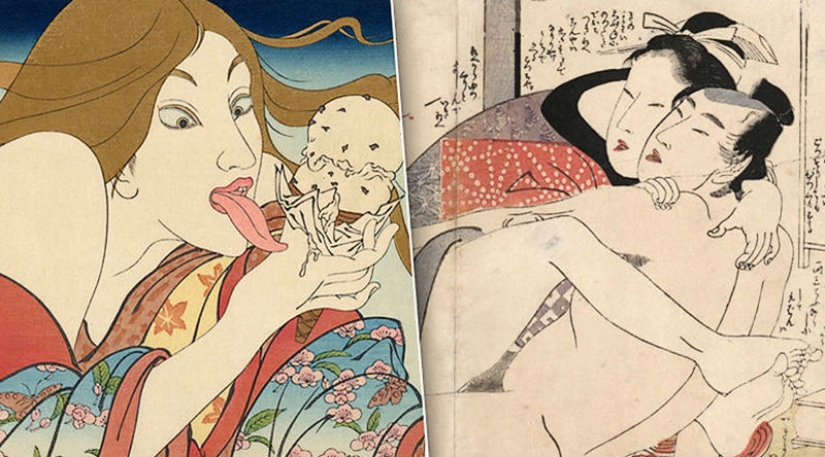
The Forbidden Kiss
To illustrate the ambivalence of the Japanese attitude to everything sexual, we will tell a funny story that happened in the 30s of the last century. In Japan, an exhibition was held, which brought a valuable exhibit-Rodin's sculpture "Kiss". A naked marble couple entwine in a passionate embrace, their mouths connecting…

That's what confused the Japanese. No, not the nakedness of the stone lovers, or even their open embrace. It was the kiss that caused the indignation and shock of the host party. The Japanese suggested that the organizers cover up the "shame", so as not to embarrass the decent citizens of the Land of the Rising Sun. Of course, no one agreed to this, and the Japanese never admired the masterpiece of the French sculptor.
After Japan's self-isolation ended, a flood of European literature flooded into the Land of the Rising Sun. Translators are faced with a difficult task-to translate the untranslatable. For example, the word "kiss". No, it certainly was in the Japanese language, but it was not playful or erotic in nature, but a touch of vulgarity and rudeness. For example, in one of the texts, the phrase "tear a kiss from your lips" was shamefacedly translated as "lick your lips". Even now, in Japanese movies or anime, you will rarely hear the Japanese equivalent of the word "kiss", more and more often you will come across the familiar English kiss, slightly phonetically changed to the Japanese manner.
Sex and religion
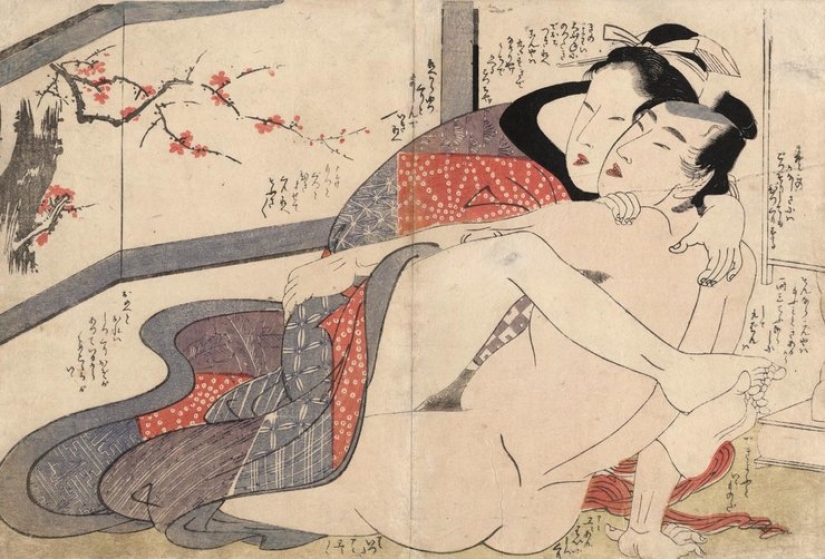
The Japanese religious system has always been friendly to sex as such. The ban on kissing was one of the few that was imposed on the Japanese. Traditional Japanese religion, Shintoism, almost did not limit the intimate life of the spouses. Although certain recommendations to the husband and wife were still given. For example, the couple was recommended to lie down with their heads to the west, and the famous writer of erotic stories Ihara Saikaku (remember this name!) he spoke disapprovingly of a husband and wife whose " sleeping mats ... are in disarray, despite the fact that last night passed under the sign of a Rat."
In the XVII century, Confucianism became the main ideology of Japan. Buddhism is the most ascetic of the teachings presented — and it was much freer in Japan than in many other countries.
Difficulties of family sex
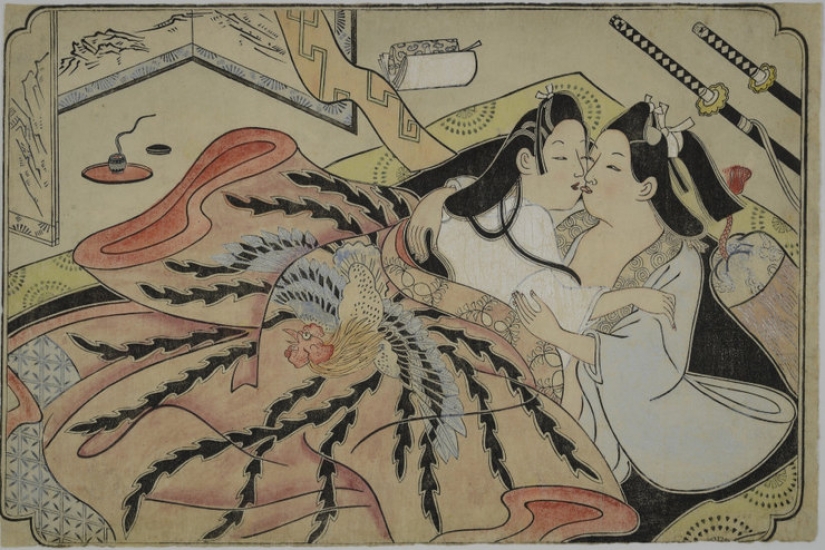
At the beginning of the XVII century, Japan was united under the rule of the Tokugawa shoguns (nobles), whose head was Minamoto Tokugawa no-Ieyasu. Like any new ruler, Tokugawa began to change the country "for the better". It was the Shoguns who closed Japan from the outside world for a long two and a half centuries. First, the Tokugawa expelled all foreigners from the country, and the Japanese themselves were forbidden to leave their homeland on pain of death.
Representatives of the upper class could have concubines, but only with the consent of the wife. Although the institution of concubines did not take root in Japan, this did not prevent Japanese men from having fun on the side, but if they caught their wife with a lover, they could deal with both without trial.
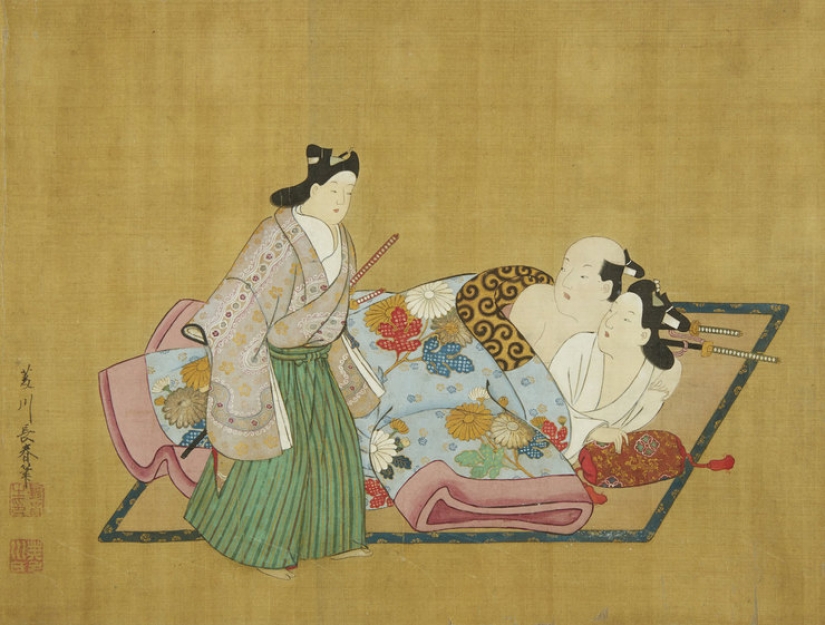
Tokugawa also changed the logistics of selling love. He identified special areas on the outskirts of the cities where you could trade yourself. These areas were surrounded by high walls and carefully guarded.
Selling love
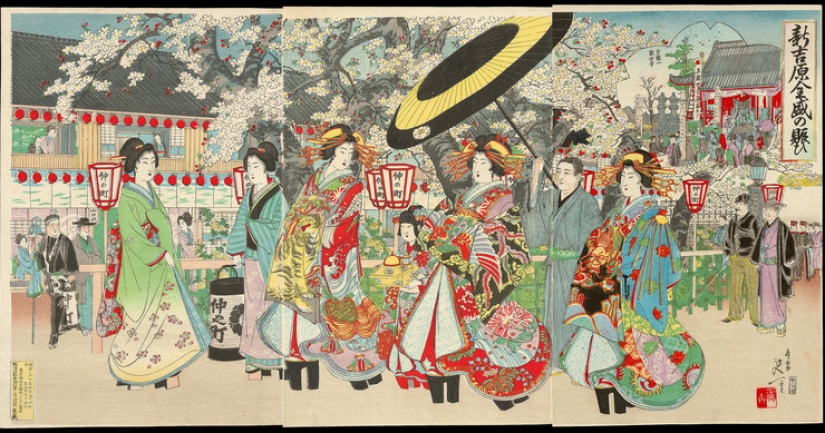
In the XIII century, the influential Japanese Hojo Shigetoki wrote a book "The Message of the Teacher Gokurakuji", which he addressed to his grandson. There he described what, in his opinion, a worthy man of the military class should do. There were also such lines:
"When dealing with corrupt women and dancers, do not think that if they are like that, you can take liberties and talk to them too familiarly. Behave and talk to them simply. If you go too far, you can become scandalized. Choose one of several corrupt women, take the one who is unattractive and not too well dressed. A man will fall in love with a beautiful girl, and an ugly one will remain without a partner. Moreover, if you choose an ugly girl, then your heart will not be hurt, because it will only be for one night. And she'll probably enjoy it, too."

In Japan, the beginning of the XVII century in the cities of Kyoto, Edo and Osaka was a place of widespread male and female prostitution. One of the largest red light districts was Tokyo Yoshiwara of the Edo era. It was created by the shogunate as a kind of ghetto for forbidden entertainment. Yoshiwara was usually reached by boat — Yoshiwara was surrounded by about 50 piers.
It was not difficult to choose an establishment to suit the Japanese taste: the front wall of the dating houses was in the form of an open lattice, through which it was easy to see the women. Expensive women sat behind vertical bars, and cheap ones sat behind horizontal bars, and the best courtesans, oiran, were completely hidden from the eyes of outsiders.
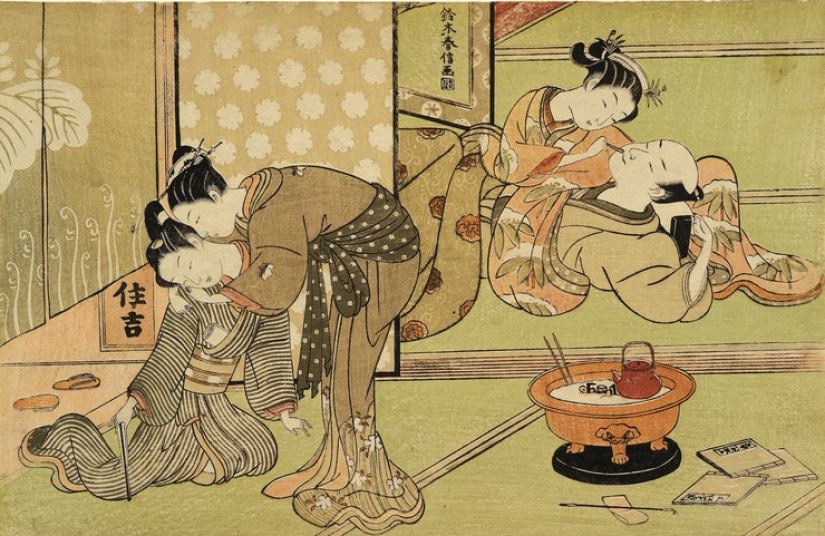
In 1893, there were more than 9,000 women living in the area. Many suffered from syphilis, died from sexually transmitted diseases, or failed abortions. Parents often sold girls to brothels between the ages of seven and twelve. If the little ones were "lucky", they became students of a successful courtesan. Although the contract with the brothel was most often concluded for 5-10 years, for huge debts, girls were sometimes kept in a brothel for life.
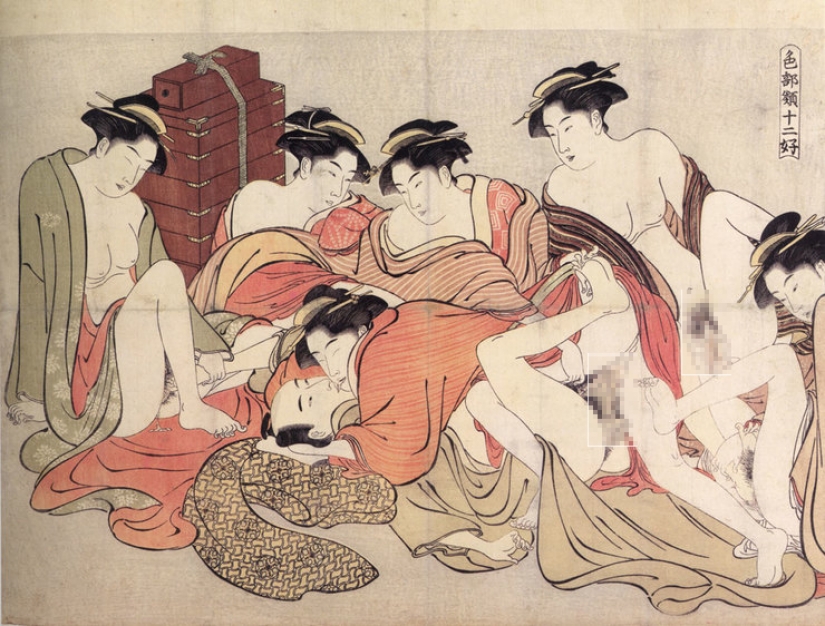
Sometimes a contract for a prostitute could be bought out by a rich man and made his wife or concubine, but such cases were rare. More often, women simply died from diseases or in childbirth.
There are about 8 categories of prostitutes: from the most inexpensive yuzo to the courtesans tayu and Oiran.
Same-sex love is worthy of a samurai
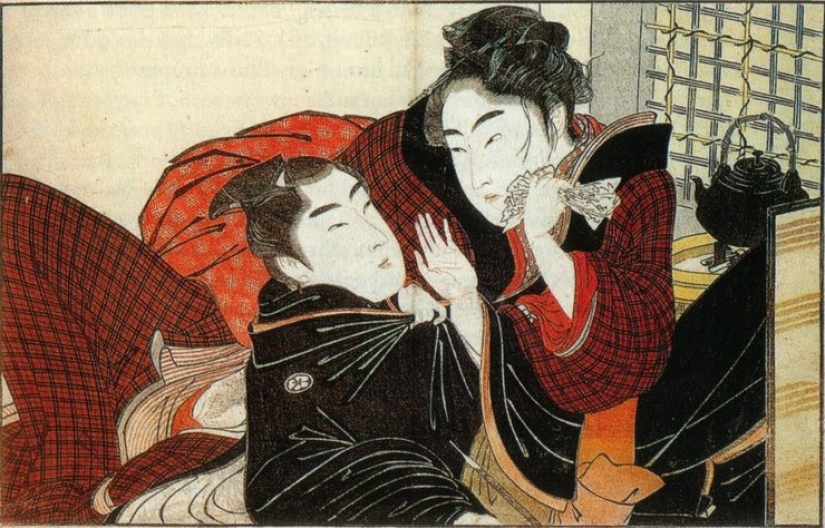
The rise of homosexuality in Japan fell at the end of the XVIII century: treatises began to appear, quite in detail discussing the aesthetic and ethical aspects of this phenomenon. Previously, "men's houses" could easily be adjacent to temples. During the shogunate, the phenomenon was severely fought, but then "corrupt men" pretended to be incense merchants and freely visited rich houses, offering their goods and themselves.

On one condition. Men should truly love each other, and not just satisfy their lust in this way. Yamamoto Tsunetomo, a former samurai and author of the book "Hidden in the Foliage", which became the code of honor of Japanese warriors, wrote: "A teenager without an older lover is like a woman without a husband. We give our feelings to only one person for the rest of our lives. The young person should check on the older one for at least five years. If during this time he has never doubted his good intentions, then he can return the favor." He also wrote: "Giving your life in the name of another person is the basic principle of sodomy. If it is not observed, it is a shameful occupation."
Samurai lovers often exchanged vows of loyalty, including in writing. A document from 1542 has been preserved, in which Takeda Shingen (in the future a great warrior and general) swore allegiance to a sixteen-year-old lover. "Since I want to get close to you, from now on, if you have any doubts about this, I want you to understand that I'm not going to hurt you. If I ever break these promises, may divine punishment befall me."
This is Japan. Ambivalent, unusual, unusual to the eye and understanding of a European, but still incredibly interesting and attractive. If you want to get better acquainted with the classics of Japanese erotic literature-believe me, it's worth reading at least once! - then remember the name-Ihara Saikaku. The Japanese writer, who lived in the XVII century, devoted many of his works to the intimate side of life. In particular, he wrote the novella "Five Women who gave themselves up to Love" and the erotic homosexual novel "The Story of Gengobei, who loved a lot".
Keywords: 18+ | Middle Ages | Traditions | Japan
Post News ArticleRecent articles

Straws are such a commonplace item that we rarely think about their origins. It seems they've always been around: in cocktails, ...

In the Victorian era Britain was quickly urbanized. By 1851 it became the first country lived in cities of more people than in the ...
Related articles

What kind of wedding traditions do not happen! The Scots pour dirty slush over the bride, some peoples of India have decided to get ...

What better way to warm up in the winter time than mulled wine, a warm hug and a hot movie? Some Hollywood blockbusters over the ...

Have you ever thought about what our life would be like if we chose not the path of technological progress, but unity with nature? ...

Every day we face some trouble. The technique is slow, when you need something rushed, all traffic lights you come across on the ...